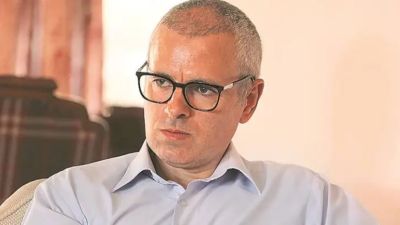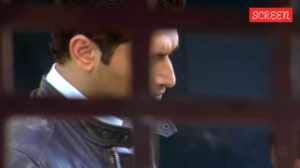Sands of time
A rocky journey through the historical site of Petra.
A rocky journey through the historical site of Petra.
Jordan comes to a standstill on Fridays. Nobody tells you that,not even Lonely Planet. We land at Amman airport around 10 am on a hot Friday in June and ride a taxi to South Station from where we plan to take a bus to Petra. The bus station is deserted; the few loiterers hide under the belly of the parked buses to beat the heat.
Our driver advises us to stay the night in Amman and go to Petra the next day. But we locate a minibus that will ply to Petra if it gets enough passengers. We sweat it out during the two hours it takes the bus to leave.
The journey through the desert is unremarkable. Hot winds blowing through the windows toast and torment us. Baskets full of fowl cluck away in the aisle. Everybody dozes off on this bumpy ride. We seem to be the only foreigners around.
At Wadi Mousa,the jumping-off point for Petra,all is forgotten. The rocky range in which Petra is hidden stretches away as far as the eyes can see. A cool breeze has worked its magic on Wadi Mousa,which,despite being so remote and small,seems to have many good hotels,including a Marriott and a Movenpick.
Wadi Mousa is a nondescript Arab town with shops selling mostly groceries and bottled water. We look for beer,but all one can get is syrupy root beer. An automated bakery churns out unleavened bread at two a minutethe machine is fixed on the roof and the breads fall with a thud on the counter below. A long line of customers wait patiently.
The next day,we make our way to Petra at the crack of dawn,as much to beat the heat as to avoid the tour groups that start lining up as the day advances. The entrance ticket is extortionate. It is supposed to include a free horse ride and a guide,but both these come with strings attached,as we find out. Were told we have to pay equivalent of the fare itself as tips if we want to avail either offer!
We decide to foot it all the way and saunter through a winding ravine meandering between towering rock walls. Sunlight squeezes in through the narrow blue slit between the rocky ledges.
Petra is reached through a labyrinth of imposing rock formation that could put Grand Canyon to shame. Petra,which means rock in Greek,was hidden away from the world until 1812 when Swiss explorer Johann Ludwig Burckhardt went in search of fantastic ruins he had heard about during his travels in the land of Bedouins.
He disguised himself as a sheikh and ventured into Petra with a local guide who,along with others,wanted to keep the ruins location hidden. The settlement,once the capital of a kingdom that straddled the land between Red Sea and Damascus,was the heart of Arabia,a hundred years before Christ.
Nabateans,possibly a nomadic Arab tribe,settled down in Petra in the sixth century before Christ. But in one of historys gross injustices,no cogent and reliable account remains of them. In their heyday,the Nabateans were trail-blazers and trend-setters,primarily because of their ability to harness precious water in the desert. They built channels and conduits to coax water from distant springs and brought them to their townships through terracotta pipes.
Archaeology has rescued what history had consigned to oblivion. The ruins at Petra give us a peek into the grandeur of the life and times of Nabateans. The Nabatean ruins comprise impressive facades carved into rock walls to mimic grand gateways and ornamental arches and pillars. But when you try to enter the arches and gateways,hoping to emerge into a courtyard or palace,there is nothing behind but solid rock or an occasional shallow cave. Historians conclude that these must be funerary structures.
The complex also contains Roman ruins of living quartersmarkets,baths,temples held by Doric columns and grand staircases built possibly after 106 AD,when Emperor Trajan occupied the city.
From whatever sparse evidence they could put together,historians believe that Petra was a bustling trading centre,especially for incense from the region,but also for silks from China,a much-sought after merchandise in the palaces of Damascus. It is easy to imagine how Petra would have been a bustling bazaar with haggling traders and merchants,their camels and horses tethered to pylons driven into the rocks. The path meanders through a deep ravine whose walls display the entire spectrum of colours from red to rust,ochre and russet. Into these are carved camels and caravans,images of gift-bearing visitors walking through ornamental arches and scenes from everyday life.
The most iconic face of Petra is Al Khazana or the treasury,where many a movie has been shot. It is only a facade,albeit an elaborately carved one and its scale is impressive. Nabatean and Greek deities adorn its niches. The wealth of funerary symbols in Al Khazana links it with the cult of the dead.
Archaeologists are discovering that ancient Petra was a sprawling city of lush gardens and pleasant fountains,enormous temples and luxurious Roman-style villas. An ingenious water supply system allowed Petrans not just to drink and bathe,but to grow wheat,cultivate fruit,make wine and stroll in the shade of tall trees. The Romans seem to have taken over Petra at some point in time and built their amphitheatres,arches,columns and plazas.
We begin our ascent to Al Deyr or the Monastery,which is perched on top of the range and is accessed through jagged steps and slippery slopes. Termed so,possibly because of the use to which it was put during the Byzantine Christian period,this elaborate structure145 feet high and 160 feet widedazzles in a golden glow cast by the setting sun. Along the way,there are the downmarket donkey taxis and the limousine-like camel taxis that come in exquisite hand-embroidered drapes and cost the earth to ride!
Then,we see many Bedouin women selling silver and turquoise jewellery at ridiculously low prices,but we go for expensive merchandisea bottle of water cooled by electricity from a diesel generator hidden away in one of the caves. At this height and wilderness and under a scorching sun,this elixir of life is more precious than any jewel. And who better to know that than the Nabateans,who built this flourishing settlement in an apparently water-starved desert!
FAST FACTS
Getting There: Fly Royal Jordanian from Delhi to Amman and take a luxury bus to Petra four hours away.
Where to stay: Hotels to suit all budgets including some very good luxury hotels and resorts
What to do/see: Petra is an all-encompassing complex that will need two days to explore. Wadi Rum desert is only a couple of hours of bus ride away where you can stay in a Bedouin camp. Aqaba,the seaside resort,where you can snorkel or scuba-dive is also a couple of hours ride away.
What to eat/drink: Jordanian bread comes in different shapes with fillingsboth sweet and savoury. Also hummus,falafel,shawarma and fresh orange juice






- 01
- 02
- 03
- 04
- 05

























